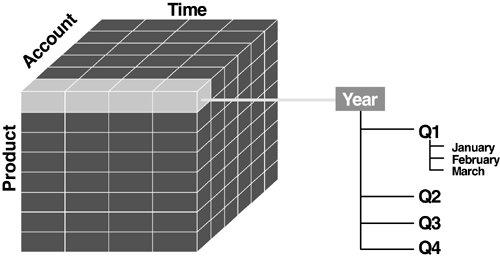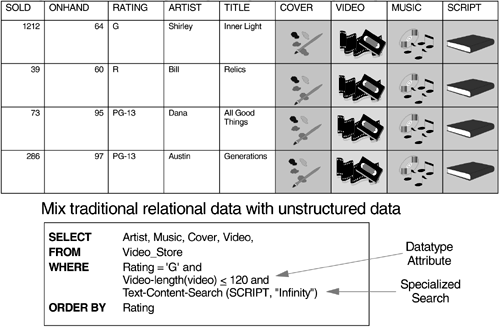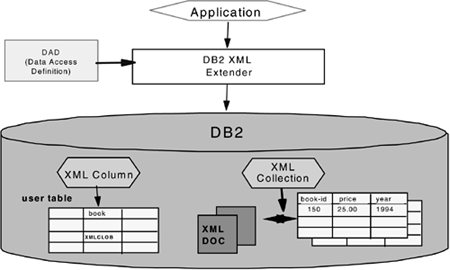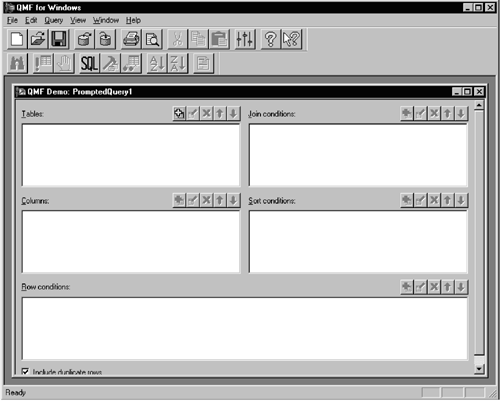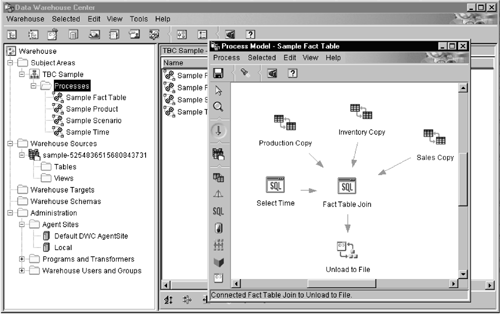DB2 Application Development
DB2 Application Development DB2 offers a rich application development environment that allows developers to build databases supporting requirements for e-business and business intelligence applications. Many of these tools are integrated with the database; the major tools are reviewed next :
DB2 Stored Procedure BuilderThe DB2 Stored Procedure Builder (see Figure 1-14) is a graphical Windows application that runs on Windows, AIX, and Solaris that supports the rapid development of DB2 stored procedures written in either Java or SQL Procedure Language with SQL procedure statements. It can work as a Microsoft Visual Studio plug-in or with Microsoft Visual Basic, IBM VisualAge for Java, or standalone. The Stored Procedure Builder (SPB) supports the entire DB2 family from a single development environment. It has facilities for debugging and deploying stored procedures. Figure 1-14. DB2 Stored Procedure Builder. DB2 OLAP ServerThe DB2 OLAP Server can be used for developing analytic applications in order to give your organization an edge on the competition. The DB2 OLAP Server presents the data in business dimensions, such as category of data or time period, allowing you to ask questions intuitively. The DB2 OLAP server helps you to do fast, intuitive, multidimensional analysis (see Figure 1-15). Figure 1-15. Multidimensional cube. There are many advantages offered by the DB2 OLAP Server, because it integrates the popular Hyperion Essbase OLAP product with the e-business-ready IBM Universal Database family, including DB2 for OS/390. The DB2 OLAP Server allows you to analyze data on OS/390 using popular Web and desktop tools such as Microsoft Excel, Lotus 1-2-3, Hyperion Wired for OLAP, Cognos PowerPlay, Brio products, and Business Objects. It also works with Web-ready tools to support full-function access to the analytical applications. Tools such as Hyperion Wired for OLAP allow you to deliver applications on the Web to different users. The OLAP Server also provides concurrent read-write support for "what-if" analysis for such tasks as forecasting and budgeting. OLAP Server combines the flexibility of a relational database management system and the performance of a multidimensional store. The DB2 OLAP Server runs on
Many applications and tools that support DB2 OLAP Server are available in the marketplace , or you can create your own application. DB2 Relational ExtendersDB2 Relational Extenders (see Figure 1-16) offer the ability to manipulate data outside of conventional rows and columns to include the manipulation of text, image, audio, video, and XML data types. The DB2 Relational Extenders encapsulate the attributes, structure, and behavior of these unstructured data types and stores this information in DB2. From the developer's perspective, the DB2 Relational Extenders appear as seamless extensions to the database and enable the development of the multimedia-based applications. The following DB2 Relational Extenders are provided by IBM:
Figure 1-16. DB2 Relational Extenders. The purpose of the DB2 Relational Extenders is to provide for the management of unstructured data through the SQL API. By preserving the current investment in relational applications, new nontraditional applications can be introduced by leveraging existing skills. This open environment enables developers and independent software vendors to develop and introduce their own extenders as extensions to DB2. The XML extender is provided with DB2 and allows you to store eXtensible Markup Language (XML) documents as a new column datatype (see Figure 1-17). You also have the ability to decompose and store XML in its component parts as columns in multiple tables. In either case, indexes can be defined over the element of attributes of an XML document for fast retrieval. Furthermore, text search and section search can be enabled on the XML column or its decomposed part via DB2 Text Extender. You can also formulate an XML document from existing DB2 tables for data interchange in business-to-business environments. Figure 1-17. XML Extender. QMFQMF is an optional, tightly integrated, powerful, and reliable query and reporting tool set for DB2. With QMF you can execute queries, format reports , and build procedures to perform multiple activities. QMF stores the queries, forms, and procedures in its own database so you can reuse them. QMF for WindowsQMF for Windows is an easy-to-use query and reporting tool for publishing reports either locally or onto the Internet (see Figure 1-18). It also integrates with other Windows desktop tools. It can be used to access DB2 on OS/390 via DB2 Connect. With QMF for Windows, end users can easily do the following:
Figure 1-18. QMF for Windows. DB2 Warehouse Center and Warehouse ManagerThe DB2 Warehouse Center and Warehouse Manager are tools that provide a way to access, manage, build, and control data warehouses built in DB2. The DB2 Warehouse Center provides agents that manage the flow of data between the sources and targets in the warehouse. One very nice feature is the means for cleansing data, generating keys, and pivoting data by means of Java stored procedures and user -defined functions. There are also extensive reporting capabilities. An unlimited license for QMF for Windows is included in the product. These warehouse functions are managed through a component called the Data Warehouse Center (see Figure 1-19). The Data Warehouse Center is itself incorporated into the Control Center. The Data Warehouse Center includes functions to define data sources, manage data movement and transformation, populate the metadata repository, and create generic schema models, including the logical star model for the DB2 OLAP Server. Figure 1-19. Data Warehouse Center. A set of warehouse transformers is included for data cleansing, generating key columns and period tables, and inverting and pivoting data. A wide selection of statistical transformers performs basic statistics, subtotals, rollups, cube calculations, moving averages, regression, correlation analysis, and other functions. In all, there are over 100 built-in transformers. You can also build user-defined functions to create your own transformers. There is an important DB2 family benefit with the DB2 Warehouse Manager. It can be used for either OS/390-to-OS/390 point-to-point data movement or point-to-point to any member of the DB2 family. With federated data access provided by DB2 DataJoiner integration, the warehouse center can be used to manage the process of moving data from Oracle to DB2 as well. When this product is purchased with DB2 for OS/390, it includes not only the workstation graphical user interface (GUI) control center, but also a full set of procedures for managing the warehouse and data natively on OS/390. The replication controls with Warehouse Center also allow for heterogeneous data sourcing into a warehouse on any of the possible target platforms. With DB2 Warehouse Manager for OS/390, the QMF family includes QMF for Windows, QMF for OS/390, and QMF High Performance Option (HPO) for query and management of your OS/390 warehouse. |
| | |
| Team-Fly |
| Top |
EAN: 2147483647
Pages: 163


